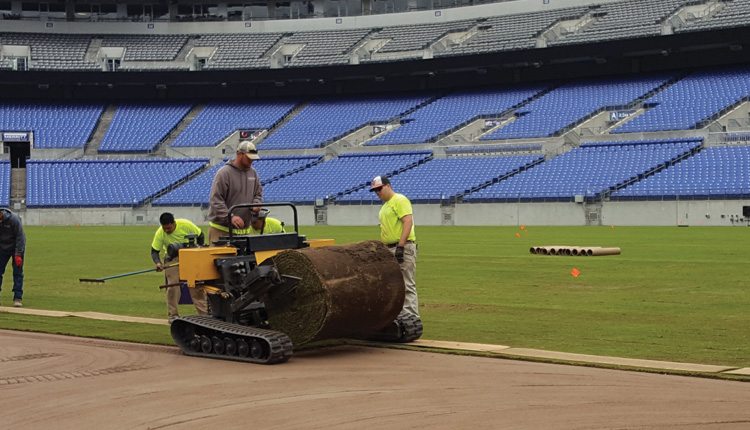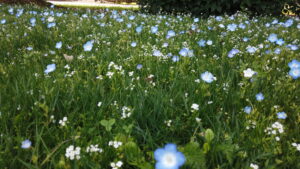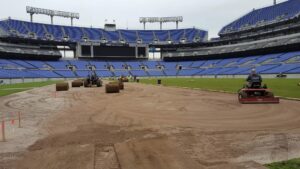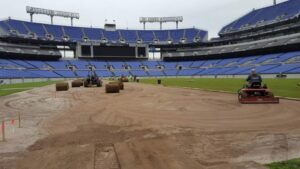Demand is at an all-time high for both more aesthetically pleasing and drought-resistance products and services.
The turf and grass seed industry remains extremely competitive and continues to grow rapidly due to a strong demand for both residential and commercial property development, and the environmental and aesthetic benefits of turfgrass, particularly in urban landscapes.
The industry contributes to the national economy through employment, spending on inputs, income from sales of turfgrass and lawn care products and services (irrigation, pest control). There’s also business taxes and supporting sectors, such as lawn equipment manufacturing, sod farms, golf courses and more.
Kevin Morris, president of the National Turfgrass Federation (NTF) in Beltsville, Md., says the grass seed portion of the turf industry has always been very competitive.
“Most turf species are cross-pollinated and population improvement results not in hybrids, but multiselection-based cultivars,” he says. “This system does not lend itself to patent protection; therefore, there is less opportunity to protect and market extremely unique cultivars.”
He says the turf industry, even with increasing competition from synthetic turf, the flattening out of the number of golfers, and the recession (which not only reduced the number of golf courses, but also demand for seed/sod used in new housing) has been growing steadily during the past 25 years or so.
“This growth has largely been fueled due to increased urbanization, as well as demand for recreational facilities, such as parks, soccer fields, etc,” Morris says. “As the U.S. population grows, the demand for turf areas will likely increase, as turf is still one of the best land uses for recreation, storm water management, cooling the air and generally protecting the urban environment.”
NTF promotes the value and benefits of turfgrass, particularly within the federal government. It also works to secure funding for unique research projects.
“Funding within the federal government is severely lacking, especially considering that turfgrass is the fourth or fifth largest crop in the U.S. (by acreage),” Morris says. “We want funding to be available for long-term projects that researchers would otherwise not have an opportunity to conduct.”
At Texas A&M University, the Soil and Crop Sciences Department is one of the largest groups of plant breeders in the U.S. Comprised of about 80 faculty, research areas include turfgrass, plant physiology, crop quality, biotic and abiotic stress, as well as several plant breeding and genetic research programs.
“The seed industry has always been competitive, so we do not see a significant change with the cool season overseeding species used in Texas,” says Lloyd Nelson, professor emeritus and ryegrass breeder, Texas A&M AgriLife Research in College Station, Texas.
“There has been some consolidation of seed companies in Oregon, which will likely result in less competition between seed producers for some markets in Texas,” he says. “Of course, much of the turf used in Texas has always been and continues to be installed by sodding lawns, which requires no seed. Some Bermuda grass is also seeded in Texas.”
While Nelson cannot speak about the industry on a national scale, he says grass seed usage in Texas has changed over the past decade due to several factors.
“With winter turf overseeding, there has been a reduction due to at least two factors,” he says. “First, many school districts and colleges have installed artificial turf fields and, therefore, no longer need to overseed athletic soccer and football fields. Secondly, water restrictions and high water costs have limited overseeding, especially in the San Antonio, Austin, Dallas and Fort Worth areas. On some golf courses and athletic fields, colorants are now sprayed on the dormant warm-season grasses during the fall and winter seasons, in place of overseeding.”
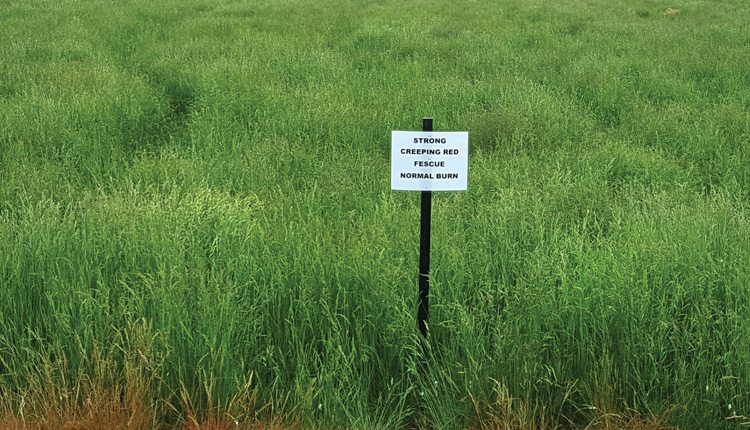
Industry Statistics
While there are statistics that show what the turf and grass seed industry contributes to the economy in terms of jobs and income, Morris says there is not a national survey conducted by the U.S. government that shows the whole picture.
“For instance, there is no one source for an estimate of the acreage of turf in the U.S., although the USDA folks tell us they estimate the number at 60 million acres,” Morris says. “The golf industry touts its impact at $70 billion annually, which includes not only the golf course maintenance aspect (about $10 billion), but also golf clubs, balls, clothing and spending at golf resorts. There are about 1 million people employed in golf facility operations and about 500,000 employed in lawn and landscape care.”
In Texas, the turf industry has a huge impact on the economy, says Nelson, who quotes figures from a 2005 study conducted by the university’s agricultural economics department.
“If all turfgrass inputs (nursery product landscape services, ag chemicals and fertilizers, equipment, water supply and domestic services) are included, a grand total of $7.4 billion was for sales alone,” Nelson shares. “Approximately 150,800 people were employed for over $2 billion. The total value added for the turf industry was $4.3 billion. These huge dollar amounts do not even include the grass seed utilized for seeding/overseeding in the forage and ranch industry.”
Nelson adds that another area not already discussed is the value-added impact of turfgrass.
“There is a huge value to the environment with protection of our soil from erosion and the like when turfgrass is growing,” he says. “An increased value of our homes and landscapes is derived when we have beautiful lawns and landscapes.”
Major Players
The biggest players in the turf and grass seed retail market (sales to homeowners) continue to be Scotts and Pennington, with retail sales making up approximately two-thirds of all grass seed sales in the United States.
“For the professional market — golf courses, sports fields, lawn care operators — many smaller companies are important players,” says Morris. “Companies such as Pure-Seed, DLF, Pickseed, Jacklin, Turf Merchants and Seed Research of Oregon produce, process and market much of the seed sold to professionals.”
Ronnie Stapp, an executive vice president for Pennington Seed in Georgia, says the increased expectation in terms of the quality and performance has fueled the growth in the industry.
“Key to that is the appearance or beauty of the turf, but we also see an expectation that grass and turf use fewer resources, like water,” Stapp says. “We have to develop grasses that use less water. Turf is important to our environment and the quality of our surroundings, so it is incumbent on the industry to develop varieties that are more environmentally friendly.”
Stapp says more than ever before, grasses must deliver superior quality and performance. “In many cases, this is more important than cost,” he says. “Gone are the days of any grass being acceptable. Landscaping and nice turf are a great part of construction and renovation plans, because of the benefit that it contributes to the quality of the surrounding environment.”
Morris says Scotts has sold its professional division to focus primarily on the homeowner market for seed, fertilizer and pest control products. Within the pest control area, a significant consolidation of companies has changed the number of players.
“Also, the recent recession has decreased the number of golf courses from a high of almost 17,000 pre-recession to just over 15,000 today,” Morris says. “The installation of synthetic turf has increased significantly, primarily on athletic fields, and severe droughts in the West have allowed water utilities to garner support for turf removal and reduction programs.”
What’s Next?
Drought issues affecting California and New England have raised the bar for drought-tolerant grasses.
“This is an important research topic,” says Morris. “Another very important topic is pesticide reduction, which parallels the need for input reduction, as a cost saving. Finally, player safety, particularly in football, is increasing in importance. Safe, high-quality natural turf athletic fields that can be easily installed and maintained are needed.”
Stapp adds: “The industry will continue to be healthy and stable, showing moderate growth. I do not see an over production developing in Oregon and expect reasonable demand based on the overall health of the economy. I also see more emphasis being placed on water usage of turf, which will continue to make it a viable part of residential and commercial landscaping.”
In Texas, Nelson says with the continuing influx of people into urban areas and a favorable job market, the turf industry will continue to grow.
“Usage of turf grass seed will probably not increase significantly,” he says. “Nevertheless, we expect a fairly stable amount of seed being used over the next few years. Because of the expansion of the housing market, in many areas of Texas, the sod and lawn care industry should see a steady growth.


